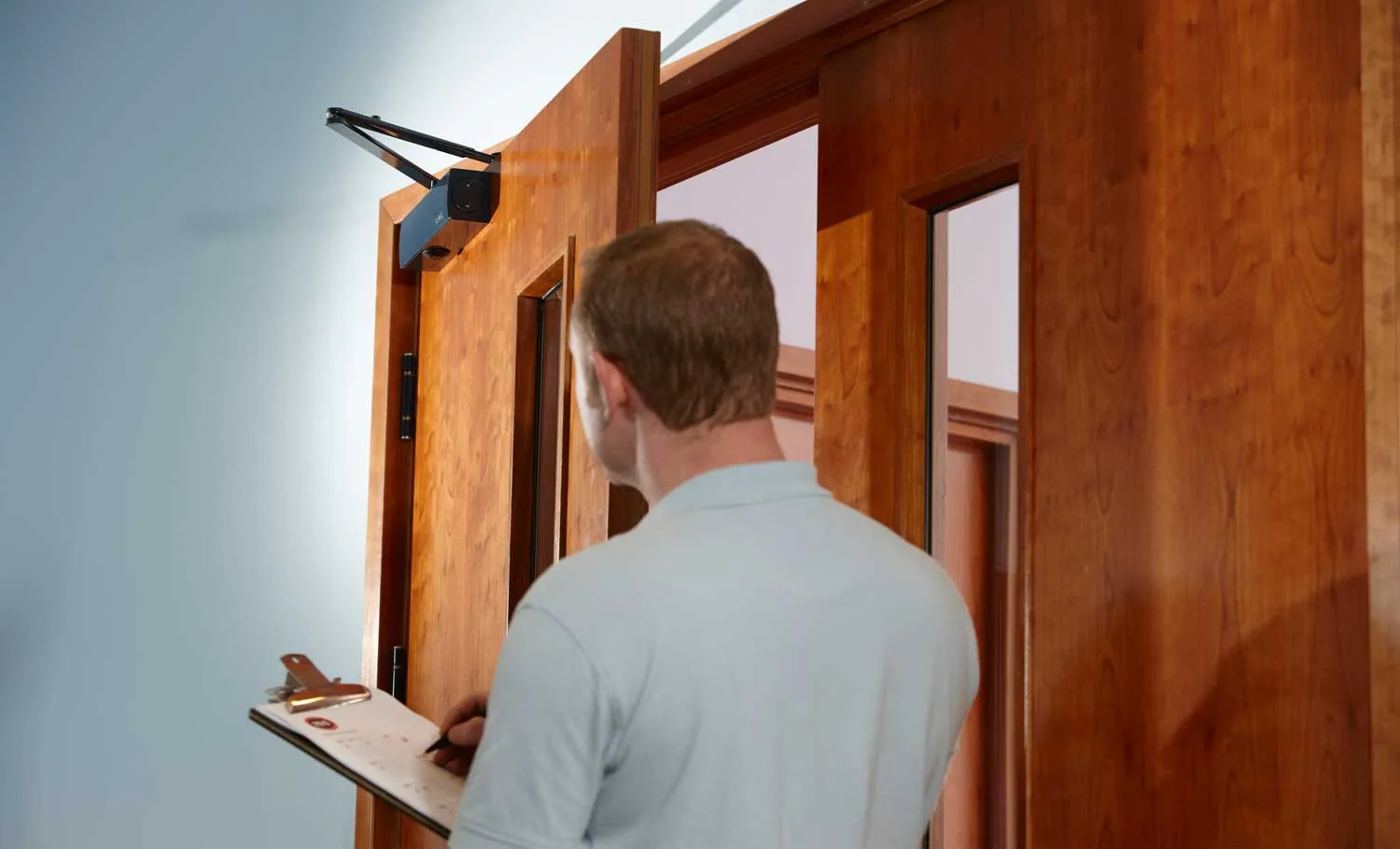Fire doors are essential to building safety and fire protection systems, designed to prevent the spread of fire, smoke, and toxic gases in a fire emergency. Constructed with specialised materials and engineering techniques, fire doors are barriers that compartmentalise buildings, contain fire outbreaks, and provide occupants with crucial time to evacuate safely. This article delves into the common materials used in fire door construction, their properties, and considerations for selecting the appropriate material to ensure optimal fire resistance and performance.
Understanding Fire Door Construction:

- Core Material: The core of a fire door is typically composed of a fire-resistant material that provides insulation and structural support. Typical core materials include mineral wool, gypsum, vermiculite, and fire-rated composite materials. These materials are selected for their ability to withstand high temperatures, resist combustion, and maintain structural integrity during a fire.
- Facing Material: The facing material of a fire door is the outer layer that protects against heat, flames, and smoke. It is usually made of steel, aluminium, or other fire-resistant materials tested and certified to withstand fire exposure for a specified period.
- Frame and Hardware: Besides the door panel, fire doors are installed within fire-rated frames equipped with fire-rated hardware such as hinges, locks, latches, and closers. These components are designed to withstand fire exposure and maintain the integrity of the door assembly during a fire emergency.
Common Materials Used in Fire Door Construction:
- Steel is one of the most widely used materials for facing fire doors due to its exceptional strength, durability, and fire resistance. Steel fire doors are constructed with steel sheets or panels that protect against fire, heat, and impact.
- Wood: Wood fire doors are constructed with solid or engineered wood cores encapsulated in fire-resistant facings or veneers. While traditional solid wood doors may not offer the same level of fire resistance as steel doors, they can still provide adequate fire protection when properly constructed and treated with fire-retardant coatings.
- Glass: Fire-rated glass is often used in fire door assemblies to provide visibility, natural light, and aesthetic appeal while maintaining fire resistance. Fire-rated glass is specially treated and tested to withstand fire exposure and prevent the passage of flames and smoke.
- Composite Materials: Composite materials, such as fibreglass-reinforced plastic (FRP) and aluminium composite panels, are increasingly used in fire door construction for their lightweight, durable, and fire-resistant properties. These materials combine the strength and stability of traditional building materials with advanced fire-retardant additives and engineering techniques to create high-performance fire doors that meet rigorous fire safety standards.
- Mineral Wool: Mineral wool, also known as rock wool or mineral fibre, is a non-combustible insulation material commonly used in fire door cores and assemblies. It provides excellent thermal insulation, sound absorption, and fire resistance properties, making it an ideal choice for enhancing the fire performance of doors and other building elements.
Considerations for Material Selection:
- Fire Rating Requirements: Determine the required fire rating for the fire door based on building occupancy, hazard classification, and applicable fire safety standards. Select materials tested and certified to meet or exceed the specified fire rating requirements for the intended application.
- Durability and Maintenance: Choose materials that are durable, low-maintenance, and resistant to wear, corrosion, and degradation over time.
- Aesthetics and Design: Balance fire safety requirements with aesthetic considerations and design preferences to create fire doors that complement the building’s architectural style and interior decor.
- Cost and Budget: Evaluate the cost-effectiveness of different materials based on factors such as initial cost, life-cycle costs, maintenance requirements, and long-term durability.
- Testing and Certification: Look for certifications such as UL (Underwriters Laboratories), FM (Factory Mutual), or NFPA (National Fire Protection Association) to ensure the quality and reliability of fire door materials.




